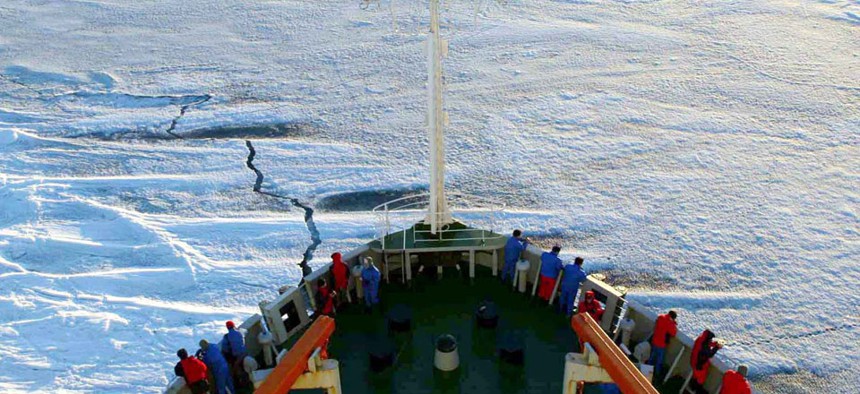Why China Just Built This Lantern-Shaped Research Base in Antarctica

Members of the Chinese Antarctica Research Team wait for the arrival at the continent in 2005. Zhang Zongtang/AP File Photo
Antarctica is the world’s last unexploited continent, and the latest site of a global race over resources and status.
Antarctica is the world’s last unexploited continent, and the latest site of a global race over resources and status. Over the weekend, China unveiled its fourth research station in Antarctica, where sovereignty is unclear and countries try to stake their claims on the area by building large research bases . The 1,000 square-meter (10,763 sq. feet) Taishan base, also known as “the lantern” because of the shape of its main building, sits near stations run by the US, Italy and South Korea.
The Taishan—which will be used to study geology, glaciers, and climate change and is equipped with aircraft designed for flying in snow and ice, according to state media —is part of a larger expansion of China’s polar footprint. Chinese spending on operations in Antarctic has jumped from $20 million a year to $55 million over the last 20 years as the country has conducted 30 voyages to the continent and builds a second icebreaker. If a fifth Chinese station is built next year, as planned, China will have quickly caught up with countries like Italy, Germany, and Japan, and will have only one fewer than the US or the UK. Chinese mappers have already named 359 sites on the continent. Here’s where China’s three previously built research stations are, compared with those of 29 other countries.

Observers have attributed China’s campaign to play catch up in the region—China only signed the Antarctic Treaty, which regulates affairs on the continent, in 1983—to the fact that Antarctica is home to possibly the world’s third-largest oil reserves , as many as 203 billion barrels, as well as coal, iron ores, manganese, and hydrocarbon, fish, and 90% of the world’s fresh water. Chinese tourism to the region is already booming. Chinese leader Xi Jinping said last summer that the country should “take advantage of ocean and polar resources .”
But it will be years before China or any other signatory to the Antarctic Treaty can begin using these untold resources. Members of the treaty, including China, have agreed not to begin mining or exploiting the region until 2048.
Thus, China’s Antarctic aspirations are likely for status and more importantly, leverage over a distant future when the region opens up. (Much like its interest in the Arctic where it gained status as an observer member to the Arctic Council last year.) “China’s exploration of the continent is like playing chess . It’s important to have a position in the global game. We don’t know when play will happen, but it’s necessary to have a foothold,” Guo Peiqiang, who teaches law and politics at the Ocean University of China, said in November.
NEXT STORY: Bitcoin Is Broken—Here's a Simple Plan to Fix It






